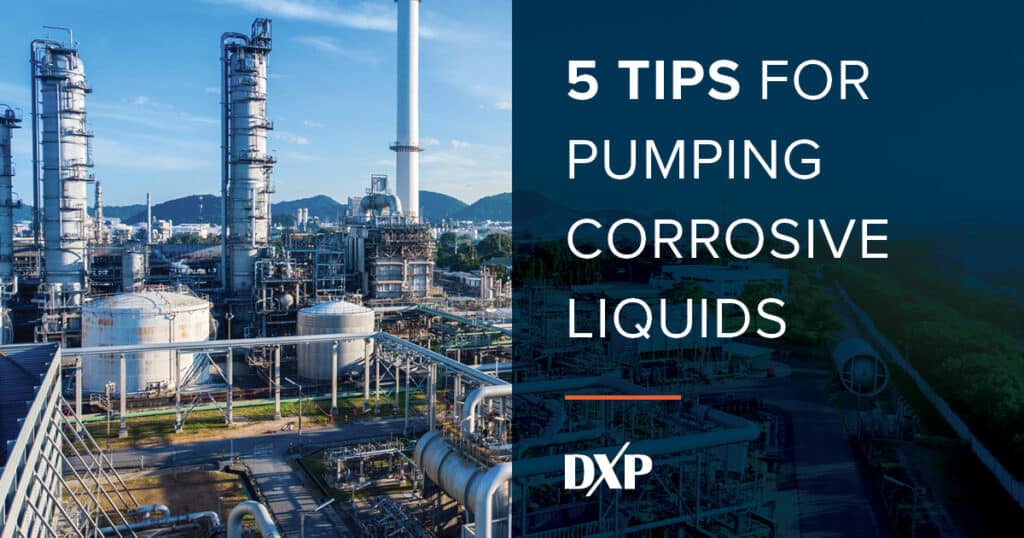Pumping corrosive liquids, abrasive materials, hazardous fluids, and harsh chemicals presents many challenges. Corrosive liquids degrade, damage, and even destroy specific pump system components. In addition, certain metals, plastics, and glass can experience significant corrosion when pumping these fluids and chemicals.
There are several concerns when it comes to pumping corrosive liquids. First, your equipment can become damaged, leading to performance loss and potential system failures and shutdowns. Second, systems may require frequent maintenance to address corrosion and excess wear on bearings, seals, pipes, and impellers. Lastly, you always have to be worried about leaks—outside contaminants seeping into the process fluid or hazardous liquids being expelled into the facility and surrounding environment. Pump leaks can be extremely costly on many levels.
So, how do you manage corrosive liquids in your pump system? Here are a few excellent tips:
- Understand the Fluid Characteristics
It’s always important to understand what liquids and materials you put through your pump system, piping, and wells. All chemicals, hazardous materials, and corrosive liquids will have specific characteristics that you should familiarize yourself with. Most importantly, you should understand how the liquid affects your equipment and individual components, including proper flow rates, pressures, temperatures, acidity, corrosiveness, and other critical factors.
- Selecting the Right Pump
Next, select the best pump for the application and the process material. Whether it’s a slurry, a chemical, or something else that is corrosive or abrasive, many different types of pumps are available. Some are better at handling complex fluids than others. By understanding your specific application and the liquids you are pumping, you can choose the right pump for the job.
- Pump Materials
Selecting your ideal pump is just one step. Many pumps and their parts can also be customized or constructed from specific materials. Certain materials may stand up better against corrosion, acidity, and abrasion. You will look at the pump housing, the impeller, the mechanical seals, bearings, and each individual component.
Select suitable construction materials that will withstand the harsh effects of the corrosive liquid, helping your equipment perform more efficiently, last longer, and reduce maintenance time. If seals and impellers don’t need to be replaced as often, that ultimately leads to more cost savings.
- Mechanical Upgrades
In addition to selecting the proper pump materials, you may consider other mechanical upgrades and system improvements. For example, investing in a more advanced mechanical seal will provide more leak and corrosion protection. For specific demanding applications, you may look at motor options like variable-frequency drives (VFDs). Piping layouts, bearings, and other items can be reviewed and optimized for your application and process materials.
- Monitor for Cavitation and Other Problems
Pay more attention to your pump system when pumping corrosive liquids, hazardous materials, or dangerous chemicals by utilizing an advanced computer monitoring system or ensuring your operators are well-trained to look out for potential problems. A great operator can often catch major issues well before they happen. For example, cavitation is a significant concern when pumping corrosive liquids, occurring when metal is removed within the pump system, and vapor bubbles form, violently imploding. Fluid leaks, loss of suction pressure, high temperatures, and poor energy efficiency are other factors you should monitor if you want to prevent catastrophic pump failures. These are a few valuable tips to consider when pumping corrosive fluids. For help with pump equipment selection, installation, maintenance, training, and monitoring, contact DXP Pacific today. Let us show you how to get the most out of your pump system, regardless of the application’s extreme.

